Choosing the right kitchen cabinet material is one of the most important decisions you’ll make when remodeling or designing your kitchen.
Your choice will affect not only the style and appearance of your kitchen but also the durability, functionality, and cost.
With various options available, each offering unique features and benefits, this guide will walk you through the 11 most common types of kitchen cabinet materials and how to choose the best one for your home.
1. Solid Wood Cabinets

Solid wood is a classic and highly sought-after material for kitchen cabinets due to its natural beauty and durability. It can be stained, painted, or left in its natural state. Popular types of wood include oak, maple, cherry, and walnut.
Pros:
- Long-lasting and durable.
- It can be refinished multiple times.
- Available in a variety of grains and finishes.
Cons:
- Expensive compared to engineered options.
- Prone to warping in humid conditions.
How to Choose: Choose solid wood cabinets if you’re looking for a timeless, high-quality kitchen with a natural aesthetic. If you live in a humid area, make sure the wood is treated to resist moisture damage.
2. Plywood Cabinets
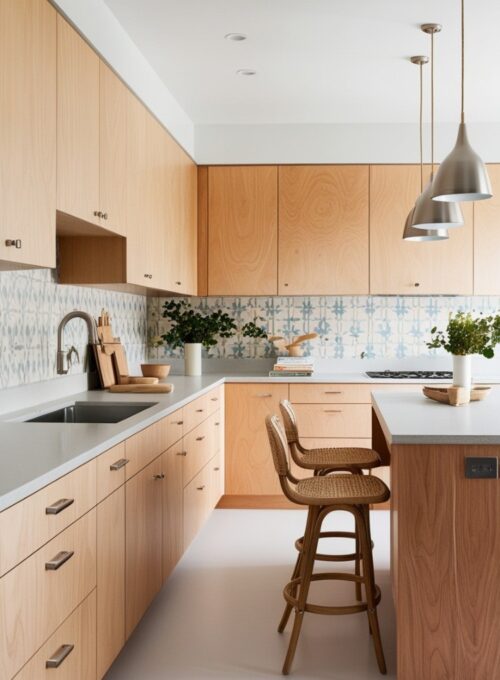
Plywood is an engineered wood product made by layering thin sheets of wood veneer. It’s one of the strongest cabinet materials, resistant to warping and moisture. Plywood cabinets are usually more affordable than solid wood but offer a similar level of durability.
Pros:
- Strong and stable, even in humid environments.
- Resistant to warping and cracking.
- Can be stained or painted.
Cons:
- Edges require finishing.
- Slightly more expensive than MDF or particleboard.
How to Choose: Plywood is a great option if you want a durable yet cost-effective cabinet material. It’s perfect for kitchens in humid climates or high-traffic homes where cabinets need to withstand wear and tear.
3. Medium-Density Fiberboard (MDF) Cabinets
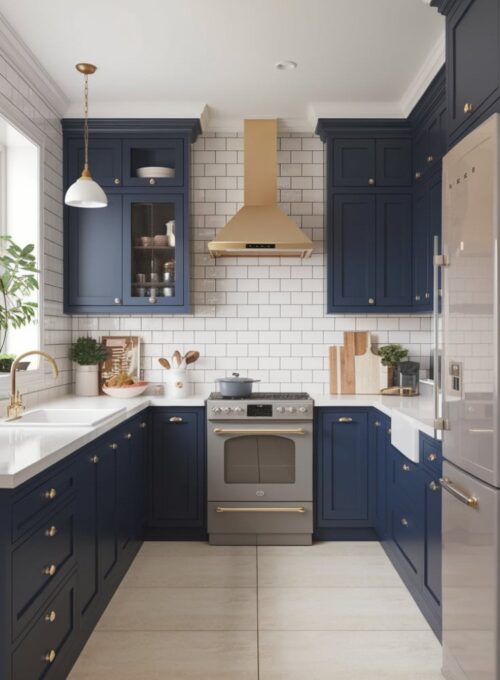
MDF is an engineered wood product made from wood fibers and resin. It has a smooth surface that’s perfect for painting, making it a popular choice for modern and contemporary kitchen designs. MDF is more affordable than solid wood but still provides a high-quality finish.
Pros:
- Smooth and consistent surface for painting.
- Resistant to cracking and warping.
- More affordable than solid wood.
Cons:
- Prone to water damage if not sealed properly.
- Not as durable as plywood or solid wood.
How to Choose: If you’re planning to paint your cabinets, MDF is an excellent choice due to its smooth surface. Choose it for a cost-effective, customizable option in contemporary or minimalist kitchens.
4. Particleboard Cabinets
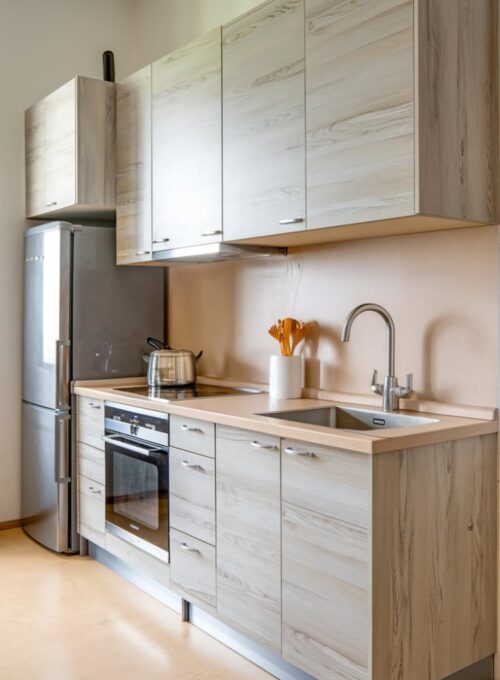
Particleboard is another engineered wood product, made by compressing wood chips and resin. It’s a budget-friendly option commonly used in kitchen cabinets. While not as durable as other materials, particleboard cabinets can be laminated for a more polished look.
Pros:
- Extremely affordable.
- Lightweight and easy to install.
- Can be finished with laminates or veneers for a smooth surface.
Cons:
- Less durable than plywood and MDF.
- Prone to swelling if exposed to moisture.
How to Choose: Particleboard cabinets are ideal for budget-conscious homeowners or temporary kitchen renovations. Choose a high-quality laminate or veneer finish to improve durability.
5. Stainless Steel Cabinets

Stainless steel cabinets are popular in industrial-style kitchens due to their sleek appearance and durability. These cabinets are highly resistant to heat, moisture, and stains, making them perfect for professional kitchens or modern homes.
Pros:
- Highly durable and resistant to heat and moisture.
- Easy to clean and maintain.
- Adds a sleek, modern look.
Cons:
- Expensive compared to wood and engineered options.
- Prone to showing fingerprints and scratches.
How to Choose: Opt for stainless steel if you want a modern, industrial look for your kitchen. These cabinets are perfect for homeowners who prioritize durability and hygiene.
6. Laminate Cabinets
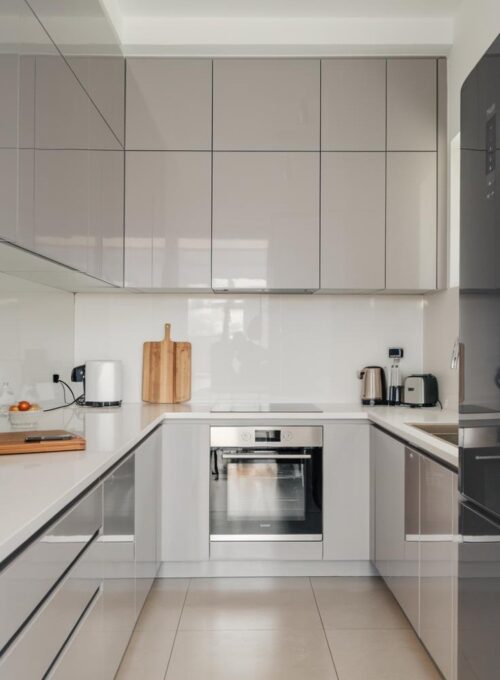
Laminate cabinets are made by layering plastic resin over MDF or particleboard. Available in a wide range of colors and patterns, laminate is highly customizable and budget-friendly. It’s also easy to clean and maintain.
Pros:
- Available in a wide range of colors and designs.
- Resistant to moisture, stains, and scratches.
- Easy to clean.
Cons:
- Can chip or peel over time.
- Doesn’t offer the premium feel of solid wood.
How to Choose: Choose laminate cabinets if you’re looking for a budget-friendly, customizable option with a modern or contemporary look. Ensure you select high-quality laminate for better durability.
7. Acrylic Cabinets
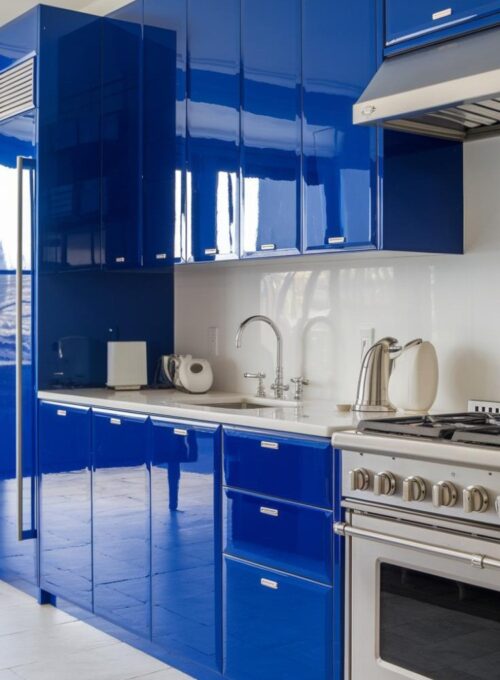
Acrylic is a synthetic material known for its high-gloss finish. Acrylic cabinets are perfect for modern kitchens that want a sleek, ultra-glossy appearance. They are also resistant to moisture, UV light, and scratches, ensuring long-lasting vibrancy.
Pros:
- High-gloss finish that’s easy to clean.
- Resistant to moisture and UV damage.
- Available in a variety of colors.
Cons:
- Prone to showing fingerprints and smudges.
- More expensive than laminate or MDF.
How to Choose: Opt for acrylic cabinets if you love the look of glossy, high-end kitchens. They are best suited for contemporary or minimalist designs that emphasize clean lines and vibrant colors.
8. PVC Cabinets
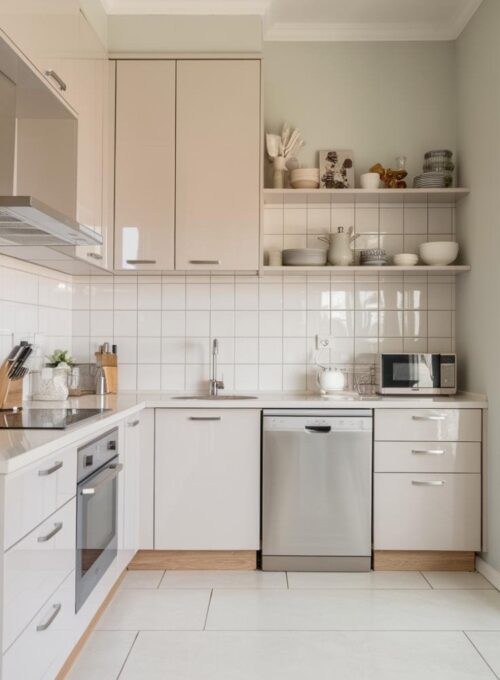
PVC (Polyvinyl Chloride) is a durable plastic material that is moisture-resistant and easy to maintain. PVC cabinets are lightweight and affordable, making them a popular choice for modular kitchens. They come in a variety of finishes, from matte to glossy.
Pros:
- Waterproof and easy to clean.
- Affordable and low-maintenance.
- Available in many finishes.
Cons:
- Not as durable as wood or plywood.
- Can warp under extreme heat.
How to Choose: PVC cabinets are perfect for modular kitchens or homes that prioritize low-maintenance options. They’re ideal for wet or humid environments, such as coastal homes or vacation properties.
9. Glass Cabinets
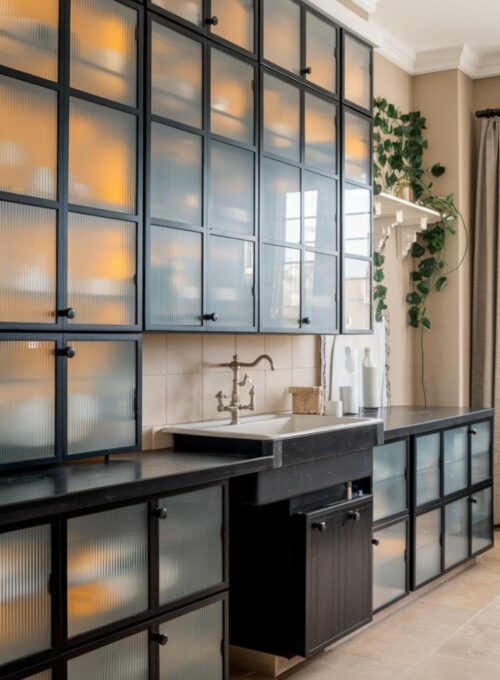
Glass cabinets are typically used for upper cabinets, allowing homeowners to display their kitchenware or decorative items. The glass can be clear, frosted, or textured, offering various design possibilities. Glass-front cabinets add an open, airy feel to kitchens.
Pros:
- Adds elegance and sophistication to the kitchen.
- Allows for the display of decorative items.
- Easy to clean.
Cons:
- Prone to breaking or chipping.
- Can show fingerprints easily.
How to Choose: Glass cabinets are best for kitchens that want to incorporate an open, airy design or to display decorative items. Choose tempered or frosted glass for durability and to hide fingerprints.
10. Bamboo Cabinets

Bamboo is a sustainable, eco-friendly material that has become increasingly popular for kitchen cabinets. It’s strong, durable, and offers a unique grain pattern that adds natural warmth to any kitchen. Bamboo cabinets are an excellent option for homeowners seeking environmentally conscious materials.
Pros:
- Sustainable and eco-friendly.
- Strong and moisture-resistant.
- Unique natural grain patterns.
Cons:
- Can be expensive.
- Limited color options unless stained.
How to Choose: Choose bamboo cabinets if you prioritize sustainability and want to create a natural, warm atmosphere in your kitchen. Bamboo is perfect for eco-conscious homeowners who also value durability.
11. Melamine Cabinets
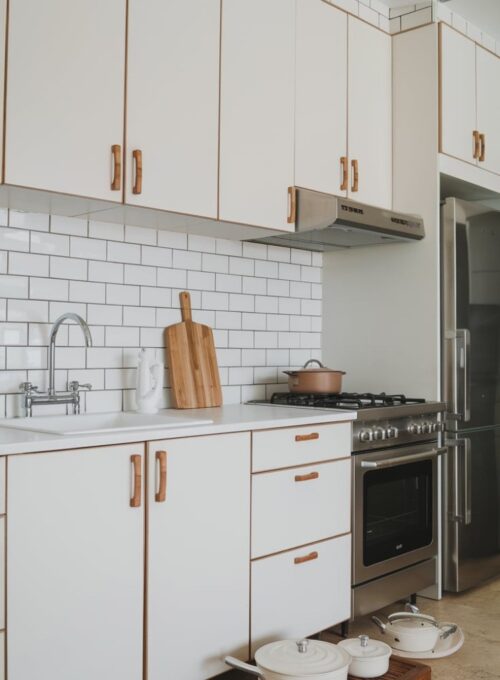
Melamine is a synthetic material made by applying a paper-based resin to MDF or particleboard. It’s durable, water-resistant, and available in a wide range of colors and textures. Melamine cabinets offer an affordable alternative to wood without sacrificing style.
Pros:
- Affordable and durable.
- Water and scratch-resistant.
- Available in various colors and textures.
Cons:
- Prone to chipping if mishandled.
- Not as premium as wood or metal options.
How to Choose: Melamine cabinets are ideal for budget-friendly kitchen designs that don’t compromise on style. Choose high-quality melamine for better durability and a variety of finishes.
How to Choose the Right Cabinet Material for Your Kitchen
When choosing the best cabinet material for your kitchen, consider the following factors:
- Budget: Set a clear budget. Materials like solid wood and stainless steel are more expensive, while options like particleboard, MDF, and laminate are more affordable.
- Durability: Consider how durable the material needs to be. If you have a busy household, choose materials that are resistant to wear and tear, such as plywood, MDF, or stainless steel.
- Moisture Resistance: If you live in a humid climate or have a lot of moisture in your kitchen, opt for materials that are resistant to water, such as stainless steel, laminate, or PVC.
- Aesthetic: The visual appeal of your cabinets should align with your kitchen design. For a classic look, choose solid wood or bamboo. For modern and sleek designs, acrylic or laminate may be ideal.
- Maintenance: Consider how much maintenance each material requires. Materials like stainless steel, acrylic, and laminate are easy to clean, while wood may need refinishing over time.
Conclusion:
Choosing the right kitchen cabinet material is an essential part of your kitchen design. From durable plywood to sleek acrylic and sustainable bamboo, the material you choose will impact the overall style, durability, and functionality of your space. By carefully considering your budget, design aesthetic, and lifestyle, you can select the best kitchen cabinet material to suit your needs.
This guide provides you with an overview of 11 kitchen cabinet materials and their key characteristics, ensuring you make an informed decision for your kitchen renovation.
Also, don’t forget to update your home with house making ideas. Let us make your home look beautiful.
